 | ||
Arslan Tash (Turkish; Arslan - Lion, Taş - Stone), ancient Hadātu, is an archaeological site in northern Syria, in Aleppo Governorate, around 30 km east of the Euphrates River and nearby the town of Kobane (Ain al-Arab).
Contents
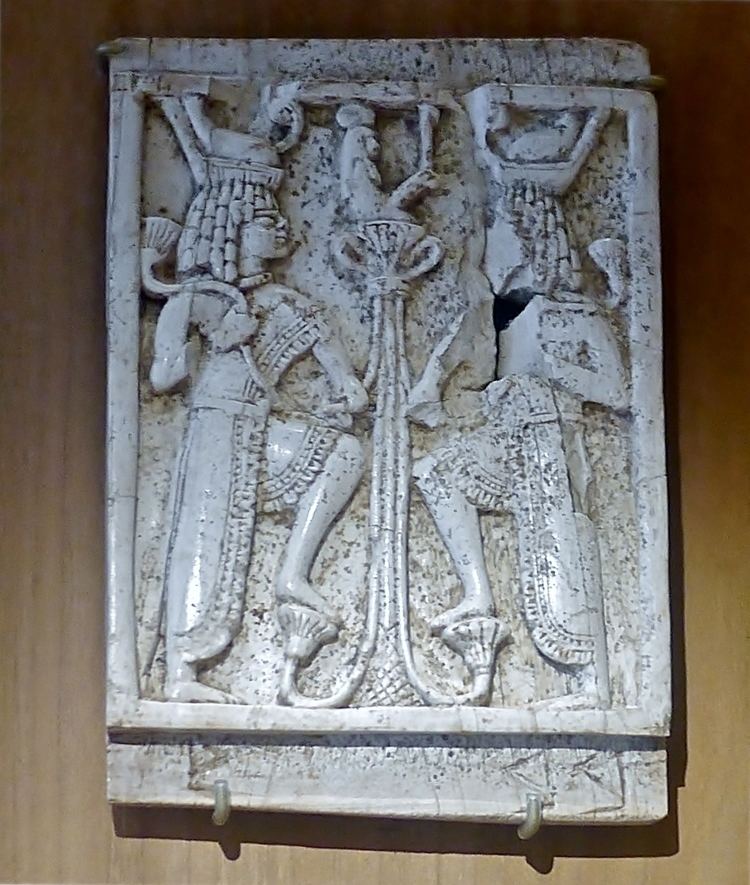
History
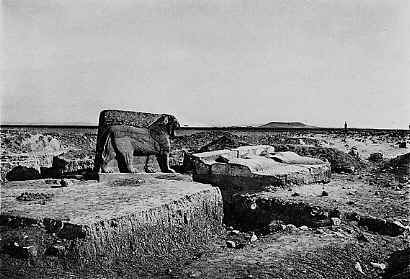
The city was the center of an Aramean Iron Age kingdom, which was conquered by Assyria in the 9th century BC. The site includes a Late Assyrian palace, an early shrine to Ishtar and a Hellenistic temple, surrounded by city walls and gates adorned with lions carved from stone.
Archaeology
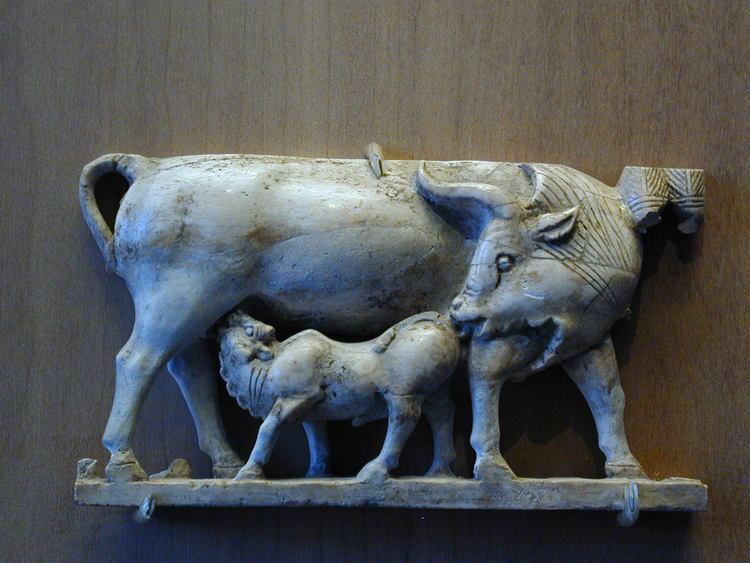
The site of Arslan Tash was first examined in 1836 by an expedition led by Francis Rawdon Chesney. The first actual excavations were conducted by the French archaeologist François Thureau-Dangin for the Louvre Museum in two short seasons during 1928.
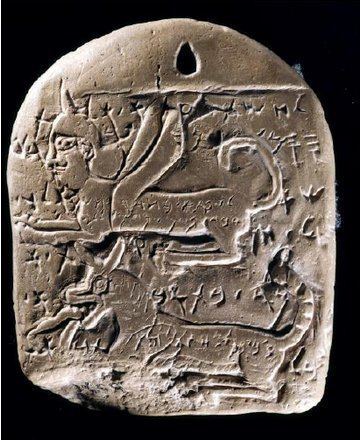
In 2007 and 2008 work at the site resumed when surveys were conducted by a team from University of Bologna and Directorate-General of Antiquities and Museums of the Syrian Arab Republic. The team was led by Anas al-Khabour and Serena Maria Cecchini. Each season lasted about a week, with the later one including geophysical work.
Gateway reliefs
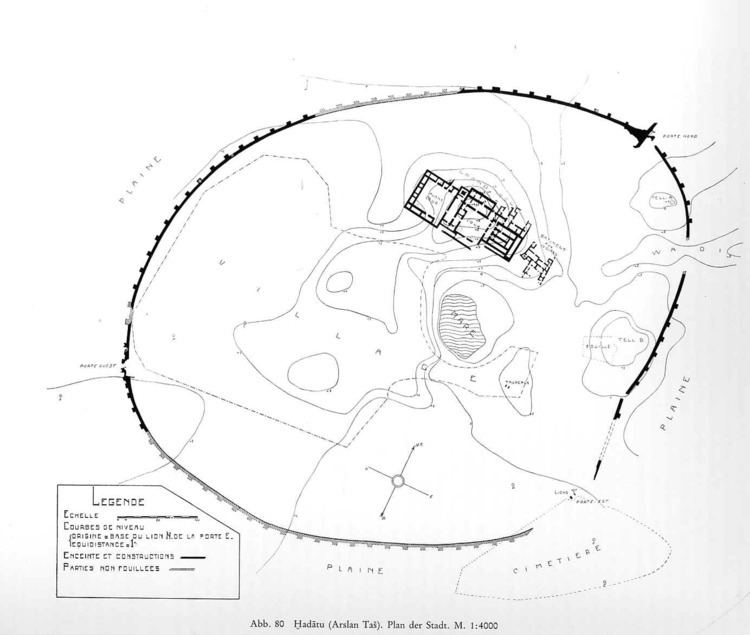
The Arslan Tash reliefs are bas-reliefs of people and animals on the gates of the city and temple. The dating of the reliefs is uncertain, though one contains an inscription of Tiglath-Pileser III of the Neo-Assyrian Empire
In February 2015, in the Syrian city of Raqqa, the Islamic State of Iraq and the Levant (ISIL) publicly ordered the bulldozing of a colossal ancient Assyrian gateway lion sculpture from the 8th century BC. Another lion statue was also destroyed. Both statues originated from the Arslan Tash archaeological site. The destruction was published in the ISIL magazine, Dabiq.
Smaller items
The most important discoveries from Arslan Tash were, however, the ivory objects of high artistic quality which today are kept at the Archaeological Museum in Aleppo and in the Louvre.
The Arslan Tash amulets are smaller pieces whose authenticity is disputed.
